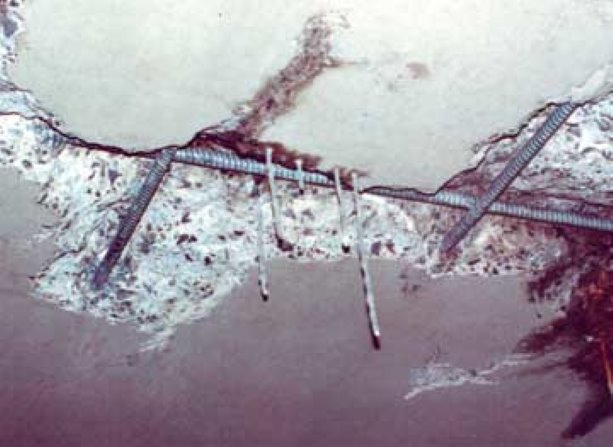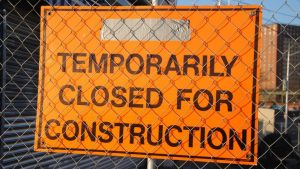The Canadian Standards Association (CSA) published a significant revision to its S-413 Parking Structures Standard in 2007, but some details of the new standard are taking time to filter into practice, says Paul Jeffs, president of PJ Materials Consultants Ltd. of Guelph, Ont.
Concrete and masonry
The Canadian Standards Association (CSA) published a significant revision to its S-413 Parking Structures Standard in 2007, but some details of the new standard are taking time to filter into practice, says Paul Jeffs, president of PJ Materials Consultants Ltd. of Guelph, Ont.
“I believe the changes are probably far more significant than the construction industry realizes,” he said.
“And, the newest edition addresses more than just the natural evolution of concrete practice and technology.”
The 2007 edition, for example, is more conservative about applications for fusion bonded epoxy coated reinforcing (FBECR) steel.
While various studies indicate that FBECR performs well, some Canadian studies, such as one conducted in 1990 by the Canadian Strategic Highway Research program, indicate that the product’s corrosion-resistance may be compromised in salt-contaminated concrete.
Canadian parking garages are notably exposed to road salts during winter months.
The original standard, published in 1987, was the first one written specifically for the construction of parking structures.
It was based largely on the results of a study of 215 parking structures in Toronto, Ottawa and Montreal, carried out in the early 1980s by the Canada Mortgage and Housing Corporation, Public Works Canada and the Institute for Research in Construction division of the National Research Council (IRC/NRC).
The study concluded that the poor performance of parking structures was a result of design and construction practices that fell short of those required to withstand the harsh Canadian environment.
The heart of the standard is Table 1, which sets out acceptable minimum protection systems based on the requirement for protection against corrosion and leakage.
“The first edition Table 1 was based predominantly on the use of a traffic bearing membrane system in conjunction with FBECR steel, depending on the type of parking structure and the degree of use,” said Jeffs.
By 1990, however, evidence showed that some concrete parking decks reinforced with FBECR were experiencing severe cracking.
The cracks were typically wider than those formed by drying shrinkage within concrete reinforced with traditional steel.
A study carried out by the IRC/NRC concluded that suspended decks of parking structures constructed using FBECR were prone to excessive cracking, because concrete doesn’t bond well to the epoxy coating.
“The major recommendation by NRC was that the use of waterproofing membranes should be considered essential and that FBECR steel should be used for both top and bottom mats of reinforcement,” said Jeffs.
But, further evidence showed that the epoxy coating didn’t protect steel rebar from corrosion.
Thinner epoxy coatings were susceptible to damage such as pinholes, while thicker coatings could compound the problems of splitting cracks caused by the reduced adhesion of concrete to the coating.
While uncoated rebar expands in volume as it corrodes, FBECR doesn’t.
That spares the concrete from cracking and de-lamination, but hides the corrosion of the coated rebar.
There is currently no commercially viable and standardized method for monitoring the presence, extent and rate of this latter form of corrosion, said Jeffs.
When the standard was updated in 1994, FBECR was still being used in many applications and remained a part of the CSA standard until 2007.
The 1994 standard also concentrated on the use of low permeability concrete and the use of corrosion inhibiting admixtures.
“A major change to the 2007 edition has been the removal of FBECR from Table 1,” he said.
“The new standard points out that the improvement in durability achieved by using epoxy-coated bars continues to be debated and indicates that provisions related to their use can be found in CSA A23.1, which requires that FBECR — along with other special reinforcement, such as galvanized, stainless and cadmium-plated steel — shall only be used when specified or approved by the owner.”
Depending on the type of parking structure, the 2007 edition now permits additional combinations of protection systems, concrete cover, corrosion inhibitors and Class C-XL concrete, which is highly durable.
Jeffs said that there’s little doubt that the evolution of the CSA S-413 Standard has improved the structural durability of parking structures.
He cited the reduction in the number of parking structure restoration projects over the last decade as proof.
“The challenge today is to learn how to cope with the plethora of concrete mixture ingredients, along with the countless variations of their combination in concrete used for the construction of parking structures across the country,” he said.
“Perhaps the greatest challenge will be coping with the thousands of structures that have been constructed with FBECR.”











Recent Comments
comments for this post are closed